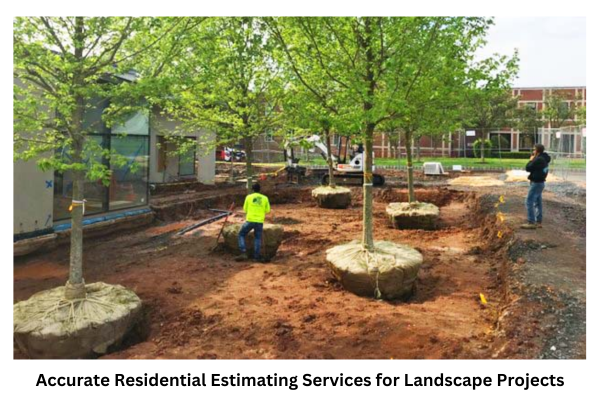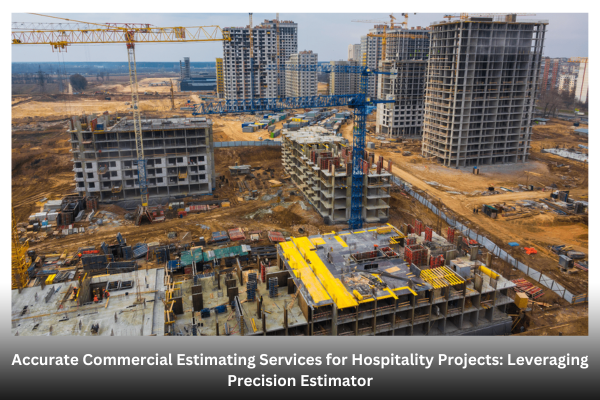In the realm of residential construction and renovation, landscape projects play a crucial role in enhancing a property’s aesthetic appeal and functionality. Accurate residential estimating service are essential for landscape projects to ensure that costs are effectively managed, budgets are adhered to, and clients are satisfied. For precision estimators, understanding the intricacies of landscape estimating is vital for delivering reliable estimates that reflect the true scope of work. This article explores the significance of accurate estimating in landscape projects, key components of the estimating process, and best practices for precision estimators.
The Importance of Accurate Estimating in Landscape Projects
Landscape projects can vary significantly in complexity and scale, from simple garden designs to extensive outdoor living spaces. Accurate estimating serves several important purposes:
1. Budget Management
Landscaping can be a substantial investment for homeowners, and accurate estimates help clients understand the financial implications of their projects. A well-structured estimate provides a clear breakdown of costs, helping clients manage their budgets effectively and make informed decisions about materials and design choices.
2. Risk Mitigation
Landscaping projects often involve numerous variables, including weather conditions, soil types, and plant selection. Accurate estimating helps identify potential risks and challenges early in the process, allowing for contingencies to be included in the budget. This proactive approach minimizes the likelihood of unexpected expenses arising during the project.
3. Competitive Advantage
In a competitive market, precision estimators who provide accurate and detailed estimates can distinguish themselves from their competitors. A reputation for reliability and thoroughness can lead to increased client trust and a higher likelihood of securing contracts.
4. Enhanced Communication
Clear and detailed estimates facilitate better communication between estimators, contractors, and clients. By outlining the scope of work and associated costs, all parties can have a shared understanding of project expectations, reducing the likelihood of misunderstandings and disputes.
Key Components of Accurate Residential Estimating for Landscape Projects
To provide accurate residential estimating services for landscape projects, precision estimators should focus on several key components:
1. Detailed Site Assessment
Before creating an estimate, it is essential to conduct a thorough site assessment. This involves:
- Evaluating Site Conditions: Understanding the topography, soil type, drainage patterns, and existing vegetation is crucial for determining the feasibility of landscape designs.
- Identifying Challenges: Any obstacles, such as large trees, rocks, or other features, should be noted, as they can impact labor and material costs.
- Taking Measurements: Accurate measurements of the site help estimators quantify the amount of materials needed.
2. Comprehensive Material Takeoffs
A detailed material takeoff is critical for an accurate estimate. Estimators must account for all materials required for the project, including:
- Plants and Shrubs: Identifying specific species, quantities, and sizes needed for the landscape design.
- Hardscaping Materials: Calculating quantities of stones, bricks, pavers, and other hardscape elements.
- Soil and Mulch: Estimating the amount of soil, compost, and mulch necessary for planting beds.
- Irrigation Systems: Accounting for the materials required for efficient irrigation, such as pipes, emitters, and timers.
3. Labor Estimation
Labor costs are a significant portion of landscape project budgets. Precision estimators should consider the following when estimating labor:
- Skilled vs. Unskilled Labor: Different tasks may require varying levels of skill, impacting labor costs. For example, installing intricate hardscapes may need skilled masons, while planting trees may require less specialized labor.
- Time Estimates: Estimators should assess how long each task will take, factoring in the complexity of the project and the crew size. Creating a timeline helps ensure accurate labor cost estimation.
4. Overhead and Indirect Costs
In addition to direct costs for materials and labor, estimators must account for overhead and indirect costs, which can include:
- Permitting and Fees: Many municipalities require permits for landscaping projects, particularly if they involve significant changes to grading or drainage.
- Insurance: Liability and workers’ compensation insurance are critical for protecting both contractors and homeowners.
- Equipment Rental: If specialized equipment (e.g., excavators or landscape trucks) is needed, its rental costs must be factored into the estimate.
5. Contingency Planning
Given the unpredictable nature of landscaping projects, including contingencies in estimates is essential. A typical contingency might range from 10% to 20% of the total estimate, allowing for unexpected expenses such as:
- Weather Delays: Inclement weather can postpone work, leading to increased labor costs.
- Material Price Fluctuations: Changes in material prices can affect overall costs, so it’s essential to have a buffer.
Best Practices for Precision Estimators
To excel in providing accurate estimating services for landscape projects, precision estimators should follow these best practices:
1. Utilize Advanced Estimating Software
Modern estimating software can streamline the estimating process, improving accuracy and efficiency. These tools often offer features such as:
- Automated Takeoffs: Quickly calculate material quantities based on design plans.
- Cost Databases: Access to current market prices for materials and labor.
- Reporting Capabilities: Generate detailed reports that outline assumptions and methodologies used in estimating.
2. Collaborate with Landscape Architects and Designers
Collaboration with landscape architects and designers is essential for accurate estimating. Engaging with these professionals early in the process helps ensure that all design elements are accounted for and that the estimate aligns with the vision for the project.
3. Stay Updated on Industry Trends
The landscaping industry is constantly evolving, with new plants, materials, and techniques emerging regularly. Precision estimators should stay informed about these trends to provide clients with the best options and ensure that estimates are based on current practices.
4. Conduct Post-Project Reviews
After project completion, estimators should conduct reviews to compare estimated costs with actual expenses. This analysis can provide valuable insights for future estimates and help refine estimating methodologies.
5. Maintain Transparent Communication
Clear and transparent communication with clients throughout the estimating process is vital. Estimators should explain the basis for their estimates, address any concerns, and be open to discussing adjustments based on client feedback.
Challenges in Residential Estimating for Landscape Projects
While estimating for landscape projects presents numerous opportunities, it also comes with challenges:
1. Weather Variability
Unpredictable weather conditions can impact both the timeline and costs of landscape projects. Estimators should be prepared for potential delays and budget fluctuations due to weather-related issues.
2. Site-Specific Variables
Each landscape project is unique, and site-specific variables can significantly affect estimating accuracy. Challenges such as rocky soil, drainage issues, or existing vegetation require careful consideration and adjustment to estimates.
3. Client Expectations
Managing client expectations is crucial for successful project outcomes. Estimators should ensure that clients have a clear understanding of what their budget can achieve and be prepared to adjust estimates based on client feedback.
Conclusion
Accurate residential estimating services for landscape projects are vital for ensuring successful outcomes and satisfied clients. For precision estimators, understanding the unique challenges and intricacies of landscape estimating is essential. By focusing on detailed site assessments, comprehensive material takeoffs, labor estimation, and contingency planning, estimators can provide reliable and transparent estimates that reflect the true scope of work.
As the landscaping industry continues to evolve, precision estimators who leverage advanced tools, collaborate with design professionals, and maintain clear communication with clients will be well-positioned to thrive in a competitive market. Accurate estimating not only fosters trust and credibility but also contributes to the successful realization of beautiful and functional outdoor spaces that enhance the value of residential properties. For more information visits our social accounts Facebook, Instagram, Twitter, and Linkedin.


